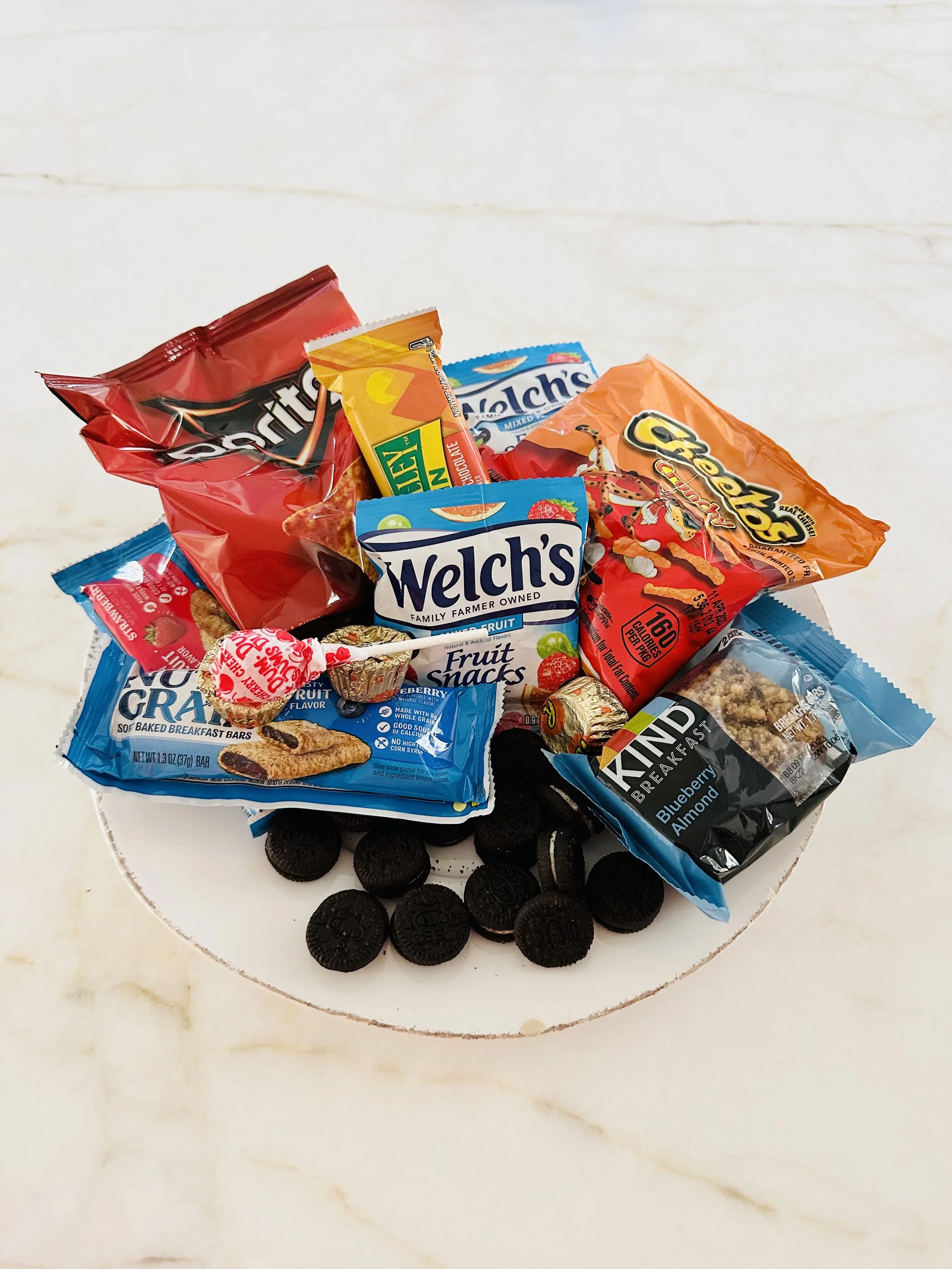What is processed food, anyway?
According to the Department of Agriculture, processed food are “any raw agricultural commodities that have been washed, cleaned, milled, cut, chopped, heated, pasteurized, blanched, cooked, canned, frozen, dried, dehydrated, mixed or packaged — anything done to them that alters their natural state.”
When it comes to health and nutrition, we think of minimally processed foods, like sliced almonds, cut fruit and vegetables, canned beans, and fortified milks and juices, as superior choices. However, these foods have been altered, albeit slightly, from their original state, which makes them PROCESSED.
As you can see, not all processed foods are bad or unhealthy! But the farther away the food gets from its original state (the more processed), the less healthy it is likely to be. Let’s use apples as an example. As soon as I wash and slice my apple, it is processed. Still healthy? Of course. Let’s say I take the skin off and juice it. Well, now I’ve removed a lot of the apple’s natural fiber and nutrients such as vitamin A, vitamin C, vitamin B6, and Folate. While the apple juice does maintain other B vitamins, it is clear that each stage of processing has rid it of its many healthier benefits.
Highly processed foods, on the other hand, is what most people may think of when this topic is in mind. These products should be limited and include:
Frozen pizzas
Pre-made frozen meals
Crackers and chips
Cookies and candies
Deli meats
RD takeaway: Eating more whole foods and less processed foods is the ultimate goal. When you are on your next grocery run (or Instacart session as I tend to find myself more and more these days), get foods that maintain the most of their original integrity. If you can’t think of or visually see the food’s original form, it’s better to limit or stay away altogether.

